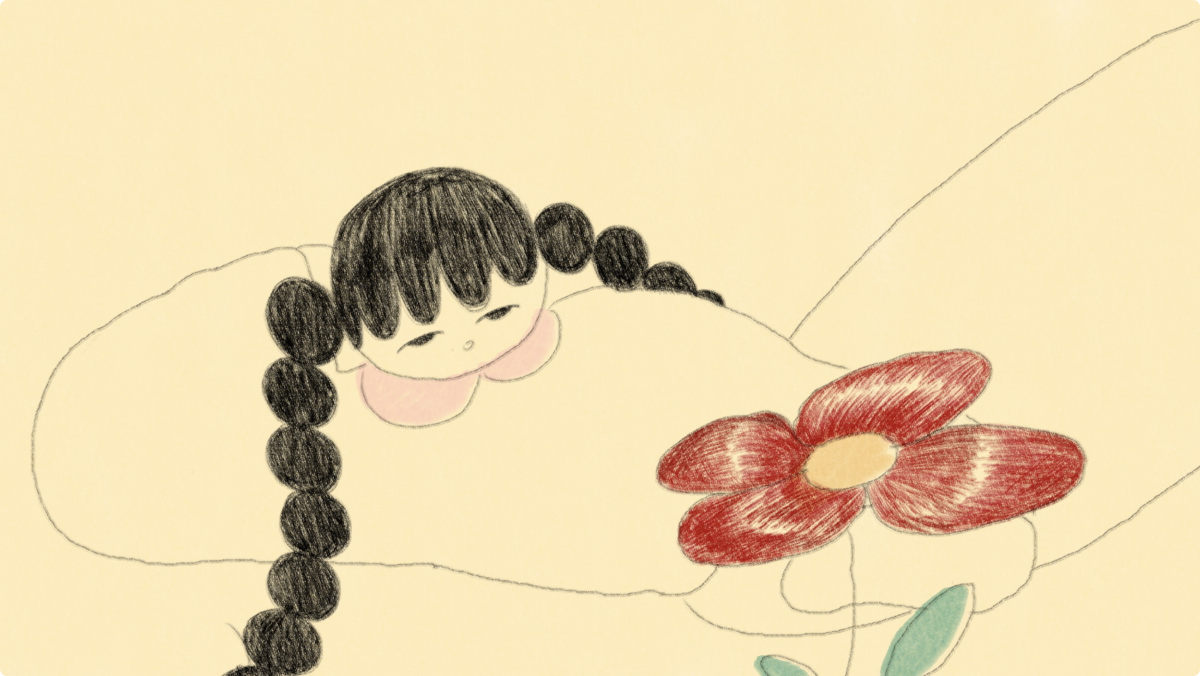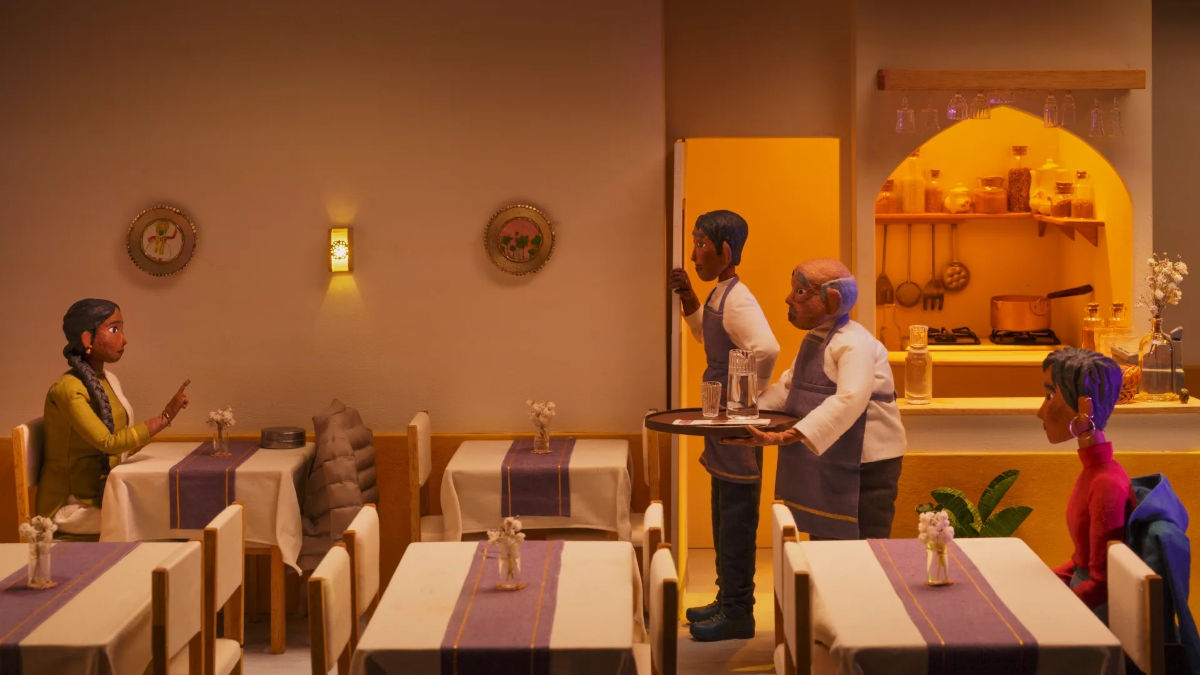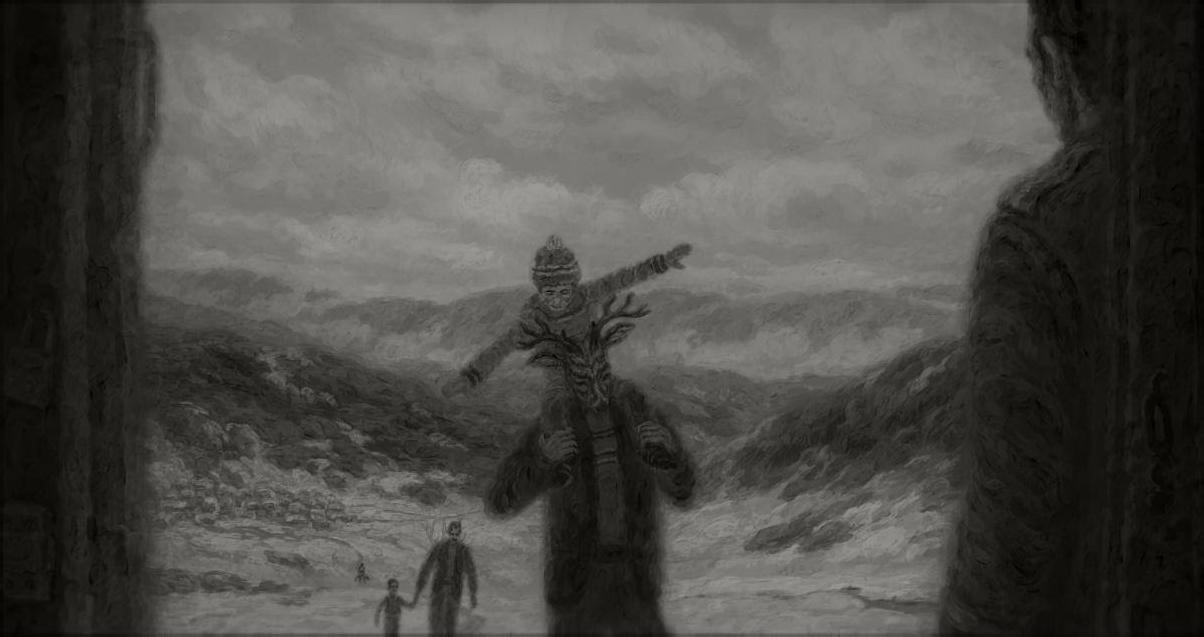In Sync with the Sun by Emily Downe
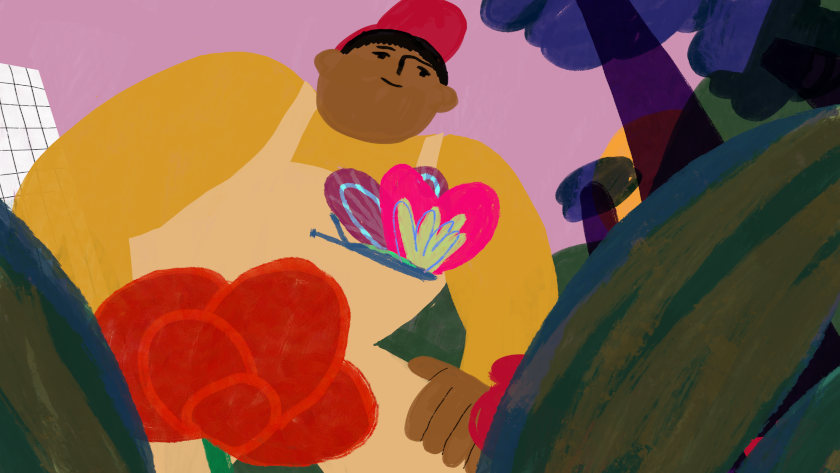
London-based animation director Emily Downe has crafted a consistent body of animation work since her 'The Redness of Red' (2018) and 'Better' (2019), putting her on our list of 21 Emerging Animation Directors of 2021. Her latest animation short, 'In Sync with the Sun' is an ode to pre-AI time and our natural connection with nature -which seems to have been somehow lost in our overproduction, modern times.
ZF: Human productivity and the need to be more productive is a pressing issue. Did you have any specific reference or incident that made you craft the whole film? Was it something personal or something you read about?
ED: A few years ago I was feeling burnt out and felt like resting was a waste of time – unless it was ‘productive’ resting. When everything stopped during the pandemic, I questionned why I was feeling this anxiety. I began to think about nature and animals; all animals, even plants and minuscule organisms exist in cycles of activity and rest. The importance of a ‘sabbath’ rest seems to be built into the natural world. I also came across some articles about Thomas Edison, who apparently thought sleep was a waste of time and unproductive. He hoped his invention of electric light would eradicate it since we wouldn’t be limited by the sun setting anymore. I was amazed by how much of an impact this has had on our culture. This inspired my idea about creating a film about this rhythm we see in nature which humans have stepped out of for the sake of productivity.
The opportunity to make a film out of the idea arose with Theos, a think tank who have been doing wider research on productivity issues. With the multi-year gap in the making, I began to realize that artificial intelligence was the next ‘light bulb’ of this generation; I wanted to link the idea of artificial light and artificial minds (AI) with this constant pressure for humans to be more and more productive. The value of our humanity being equated to our productivity in society is what I wanted to address in the film.
ZF: How did you decide on the main character and the corresponding characters to feature (humans, animals, robots)?
ED: The animals I chose came partly from my research – for example, koalas are among the sleepiest animals, sleeping for around 20 hours per day. I also wanted a contrast between mighty animals like lions and leopards and small snails and ants; yet they all rest. Towards the end, a butterfly comes as an antidote to the ‘machine’. I chose a butterfly for this because they are delicate creatures that take a while to form in the chrysalis, and yet they only live for a couple of weeks once formed. The opposite of what is deemed productive in our society, and yet each one is unique, precious, and a work of art.
With the human characters, I was inspired by the biblical story of the prodigal son. The family in the jungle village represents the main character’s home, living in a community with a healthy value of productivity and rest. But we first meet him in a very different environment – a utilitarian city that never sleeps, made to believe his worth comes from the number on his productivity badge, but he struggles to keep up.
I chose to represent artificial intelligence as robots because I knew that they needed to come out of what he was creating. In the beginning, we see the character creating a production line of products or sculptures, but then a mysterious figure makes them come ‘alive’. His creation replaces him.
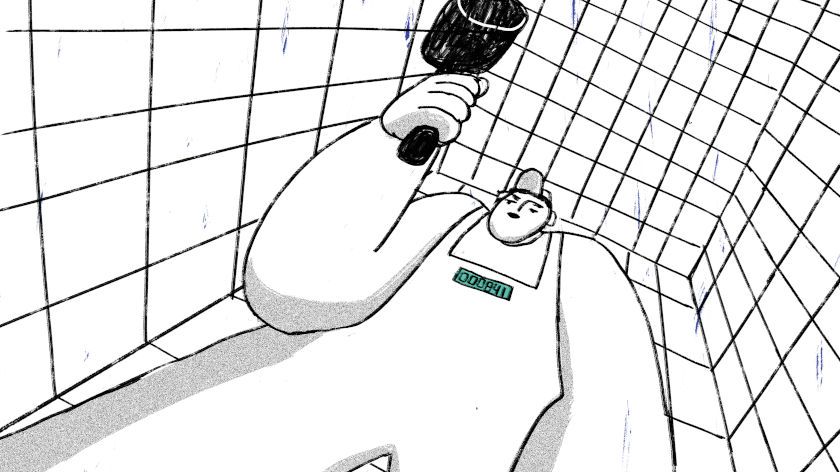
ZF: Your film refers a lot to wild nature, forests, and a corresponding color palette (which contrasts with the whitish urban environment). The jungle was also featured in your graduation film 'Better'. What were your visual references and why the jungle environment -and not, for instance, the river or the countryside?
ED: I’m fascinated by the jungle and its mixture of chaos and beauty. I chose to situate 'In Sync with the Sun' in the jungle because it encapsulates the richest aspects of nature, and it is home to an immense variety of living beings. There’s also a primal link with the history of humanity, linking back to the idea that humans are, and have always been, part of the rhythm in nature.
ZF: Was it an easy film to make creatively? Did you have a lot of ideas to put forward and did you have to change a lot of things in the process?
ED: It’s always a challenge to pull out my ideas and put them into the real world as they often start very abstract! I wrote a rough script back when I had the initial idea, a lot of it stayed in the final script but it did change a lot. Initially, the film was more about sleep, more poetic and abstract; but when it shifted focus towards the idea of productivity, it began to develop into more of a story. Yet some scenes, and particularly the film's rhythm, are directly from the very first idea I had. The connection with artificial intelligence only came much later as I was processing and writing about the topic. While I was at the RCA about 5 years ago, I made 'The Redness of Red' which looked at the questions around AI and consciousness, and I had wanted to revisit the topic ever since.
ZF: Can you tell us a bit more about the animation technique?
ED: The animation technique is mostly digital 2D, frame by frame, with After Effects animation in some places. I worked with the excellent animator Martha Halliday who helped massively with the bulk of the digital animation! The sleep scenes, however, are all animated straight ahead with paint on paper. I wanted these scenes to feel free, playful, and dreamy, so painting the animation was a way to remove some of the control that comes with digital animation. I deliberately didn’t plan the movement and only watched it back at the end which helped to create a slightly dreamy and confusing outcome, in contrast to the rigid lines of the black-and-white world.

ZF: How did you handle the non-visual part of the film? You decided on narration and the sound design is interesting as well.
ED: I usually work very early with the script and sound as the ideas often all come together. I like to use poetic writing to express my ideas; in this film, a lot of the writing came first, and the visuals stemmed from there. The film pace was important because of the themes around life patterns and cycles so I started working with sound very early on. I created a temp track that laid out the rhythm and feel that I wanted; that formed the basis for editing the animatic. One reference I used was Alexandre Desplat’s 'Isle of Dogs' soundtrack. I wanted the film to have a militant feel to it, at points being propelled by an unwavering rhythm and then contrasted to the soft and soothing melody of the times of rest and play. My composer Jan Willem de With did an incredible job of bringing all these elements together and creating a soundtrack with so much rhythm and texture to it!
ZF: Production-wise, was it pressing/stretching to make the film in terms of schedule/budget?
ED: I was fortunate to be given a good amount of time to work on this with Theos. We only had a budget for a very small team, but we worked on it on and off for about a year. There is always more you want to do with animation so there’s always a pressure to do as much as you can in the timeframe, but it was great to be able to flesh out the idea from thinking about it for several years.
ZF: Do you wish your audience to interpret the film as a call to action or simply a reminder of things already here with us? And what's next for you?
ED: The film is a call to question why technology is progressing in the way it is and a call to resist this demand to make our lives and our humanity more and more artificial for the sake of productivity. It’s also a reminder of our human connection with the natural world; we aren’t machines so we shouldn’t act like them. I wanted to create a sense of wonder for the rhythms that our natural world exists in, revealing the balance of work and rest in everything is formed in. There is a separation of day and night - what is the consequence of pushing against these boundaries?
I also wanted the film to reflect the value of areas of society/being human that can’t be measured in a metric system. The arts, care work, friendship, charity etc. can be deemed as ‘unproductive’ with this mentality -many important and beautiful aspects of being human are rendered useless. Productivity is necessary for our world to function, but I wanted the film to shine a light on the issues that an unhealthy obsession with productivity can cause -and instead evoke a desire to live more in sync with the boundaries and rhythms that are embedded in the natural world we are a part of.
Watch 'In Sync with the Sun'
About Emily Downe:
Emily Downe is an award-winning animation director based in London. Her short films explore research-based topics in technology, philosophy, and the human story expressed through 2D, frame-by-frame animation. She has screened films in competition at multiple international film and animation festivals including Annecy, Encounters, Ann Arbor, Cinanima, and LIAF. She is the co-founder and co-director of Studio Desk. She completed her MA in Documentary Animation at the Royal College of Art in 2019.





